Alchemy
the slow craft of turning skin into leather
Misty. Aelfwin. George. Brownie. Some of the names I’ve been pulling out of the freezer these past few weeks to begin the age-old alchemical process of turning skin into leather. I know each one by the colours and qualities of their pelt revealed when I tear open the black bin bag they’ve been rolled up in. I don’t recall all of their names, but I could tell each one’s story. Perhaps I will, when I’m cosied up fireside some winter’s night wrapped in soft fleece and satin fur.
Gizmo, the kid with a pelt like black satin, who ran his mother ragged. Fíonn, the handsome ram who turned bad. Sweet little Froggy who only wanted to be our pet, but we just can’t keep them all. Ah, beautiful Brigid, the wildest and fattest ewe lamb there was with the thickest, heaviest fleece that was her literal downfall. I noticed her the day before I found her dead, sitting on her brisket on the rocks where she always sat, chewing her cud, waiting for her mother ewe, the one we called Big Trouble, to come home from whichever neighbouring field she shouldn’t have been in that day. I noticed her as though something was wrong. As though a shadow passed over her. As though something whispered watch that one. Something that made the hairs on my spine stand up. I couldn’t see anything wrong with her, chewing her cud, relaxed, waiting, so I resolved to come back and check her again later. But then I was called away to deal with an emergency with the lowland sheep and I didn’t get home to the Hill until after dark. When I found her the next morning she had rolled off her perch on the rocks onto her back and hadn’t been able to get up again, held there by the weight of her rain-drenched fleece until the pressure of her belly full of heather on her lungs killed her. That happens frighteningly often to sheep. But I couldn’t have known it would happen to that fine, strong ewe lamb that day. I wasn’t going to let the Hill have Brigid’s precious pelt of eight inch long, chalky-white locks grown of heather and shale and rain and all the effort and care we put into breeding and raising such a beauty, so I hauled her heavy, stiff body into a wheelbarrow and up across rock and heath to the willow grove, roped her dead weight to a generously arched branch and set to work to separate skin from cold flesh.
Skin doesn’t separate easily from cold flesh. Membrane and fluids dry as the body cools and stick skin to flesh like glue. Woven fibres tighten as muscle sets in rigor mortis. It was November. It was our first winter living wild on the Hill and I worked on that cold, dead sheep through freezing rain showers and bitter wind under the sparse shelter of bare willows until my fingers were numb. I saved her pelt. I rolled it up into a black bag and stuffed it into the freezer in storage where it waited in frozen perpetuity until now, almost three years later.
To be tanned, the skin must first be pickled. I see a lot of people pickling skins and thinking that’s it, then wondering why their skin is grey, papery and mouldy. Pickling is not tanning. Tanning is the transformation of skin into leather by chemical bonding of tannins in plant material (or aldehydes from woodsmoke in fat and smoke tanning, or metal salts in chrome or alum tanning) with proteins in the animal skin. It is alchemy at work. Tanning with tree bark is the melding of plant and animal into something else; death and debris into something new and lasting, durable and beautiful. Pickling is just pickling. Pickling prior to tanning lowers the pH, softens and opens up the skin so that the tannins can penetrate and do their finest work. It isn’t essential to pickle, but for my purpose it gives a softer, lighter result. It also preserves and buys time to work on fleshing and cleaning the skin before it goes into the tan. Raw animal skin rots quickly.
I strip bark from the fallen oak with a heavy, double-handled blade I bought handmade from Hammarede for fleshing animal skins, much too heavy and sharp for its original purpose but perfect for stripping tree skins. The oak fell late last winter, in storm Eowyn. Its taproot cracked, the tree tore from the rocks it stood on, but still anchored to the earth beneath by strong lateral roots it leafed up in spring and sent up brave new shoots and our goats feasted on bitter oak leaves offered at browse height from the fallen giant. We let it lay all summer, feeding the goats and the multitude of life an oak, even a fallen one, feeds, before we began to harvest bark for tanning and timber that will feed our home fires for years
I read somewhere from a study by people who measure these things that the tannins in oak bark increase from spring through summer, long after the sap has risen. Young bark is best, peeled in thin strips from the smoothest limbs. On fast-growing willow, I look for three to five year old growth; on our two-hundred-plus year old fallen oak, by rough count of growth rings the branches I’m stripping first are twenty to fifty years old. But I will also chip thicker bark from older boughs with a hatchet for the sake of quantity. I strip bark until my back aches and my blade begins to slip and the chores of the late day call. It’ll have to be enough, I tell myself, but I know it won’t be, by the time I’ve hand-shredded it and peeled away the excess wood. It takes a lot of bark to turn skin into leather, and stripping bark is slow, laborious work. I measure the tannin content of my harvested bark brewed up into buckets of red, woodsy tea by good old-fashioned taste test. Tannins are bitter and drying, astringent. Think unbearably strong black tea, biting into a sloe, or a bitter medicine your great-grandmother might have made. The more drying, the more your throat and taste buds cringe from the astringency and bitterness, the better. Depending on strength, it could take a week or a month or a year for the tannins to penetrate and work their alchemy through the full thickness of the hide. Our native oak is mild. Its flavour is earthy, mossy, bitter, slightly puckering. It’s going to take a while.
In ancient times in this part of the world, skins were tanned in black earthen pits which would collect soft rain and bog water; hides layered into the pits with bark and left to work their alchemy for many weeks or months before emerging as leather. I will leave the fallen sheep’s skin to bond with the skin of the fallen oak for as long as it takes to merge into its new form. This is slow craft. My antidote to a too-fast world that wants everything done at the tap of a finger. The working of this ancient art cannot be hurried.
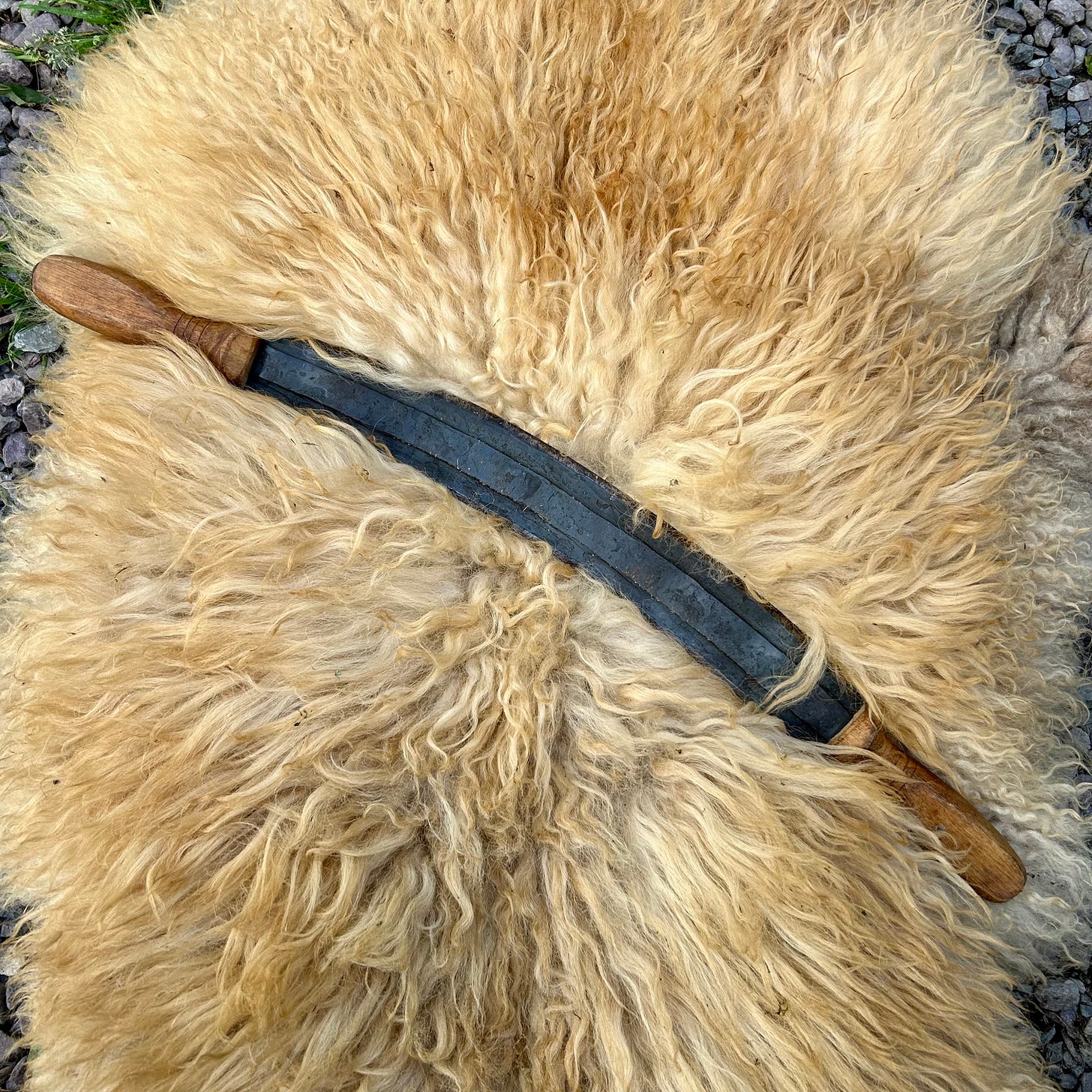

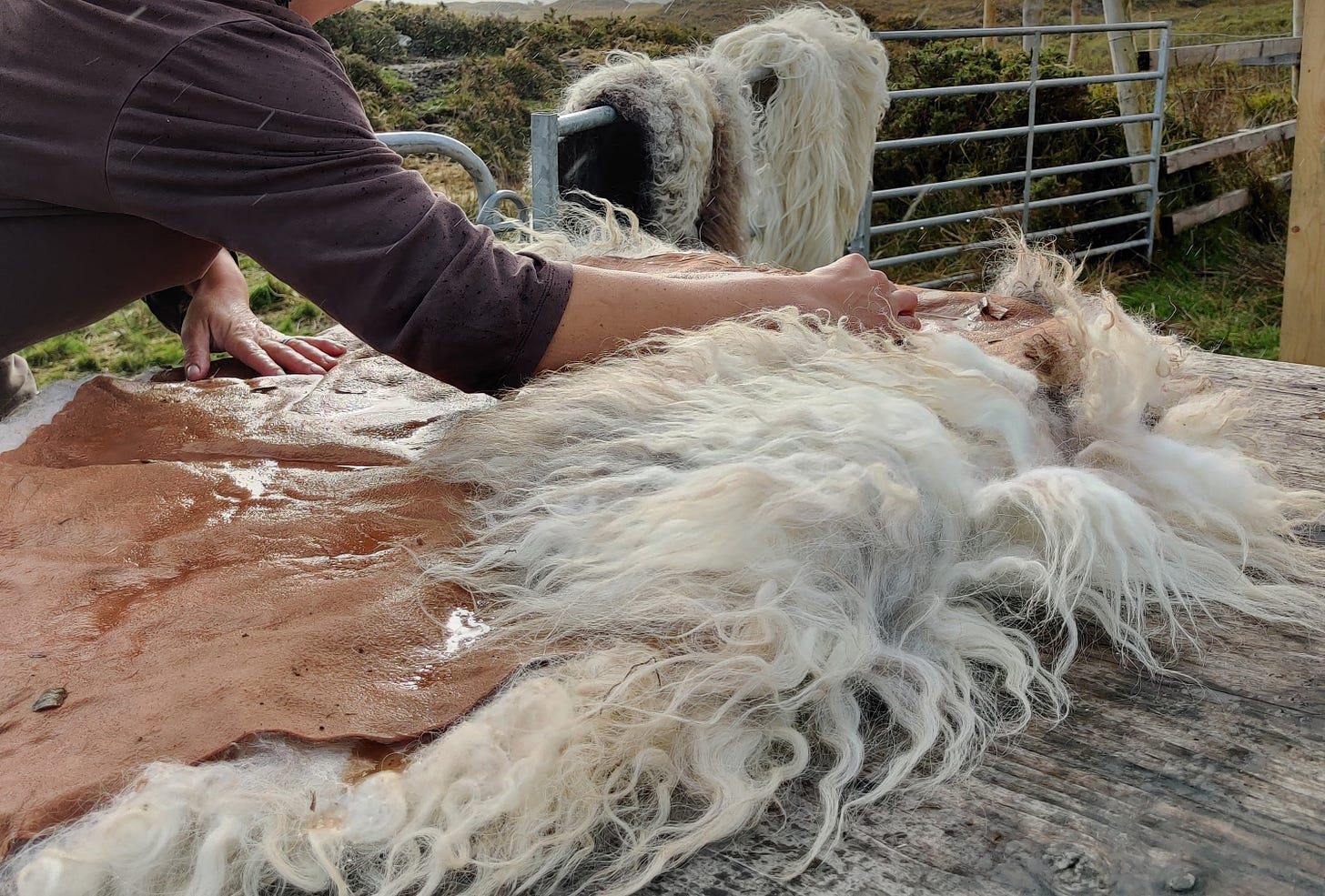
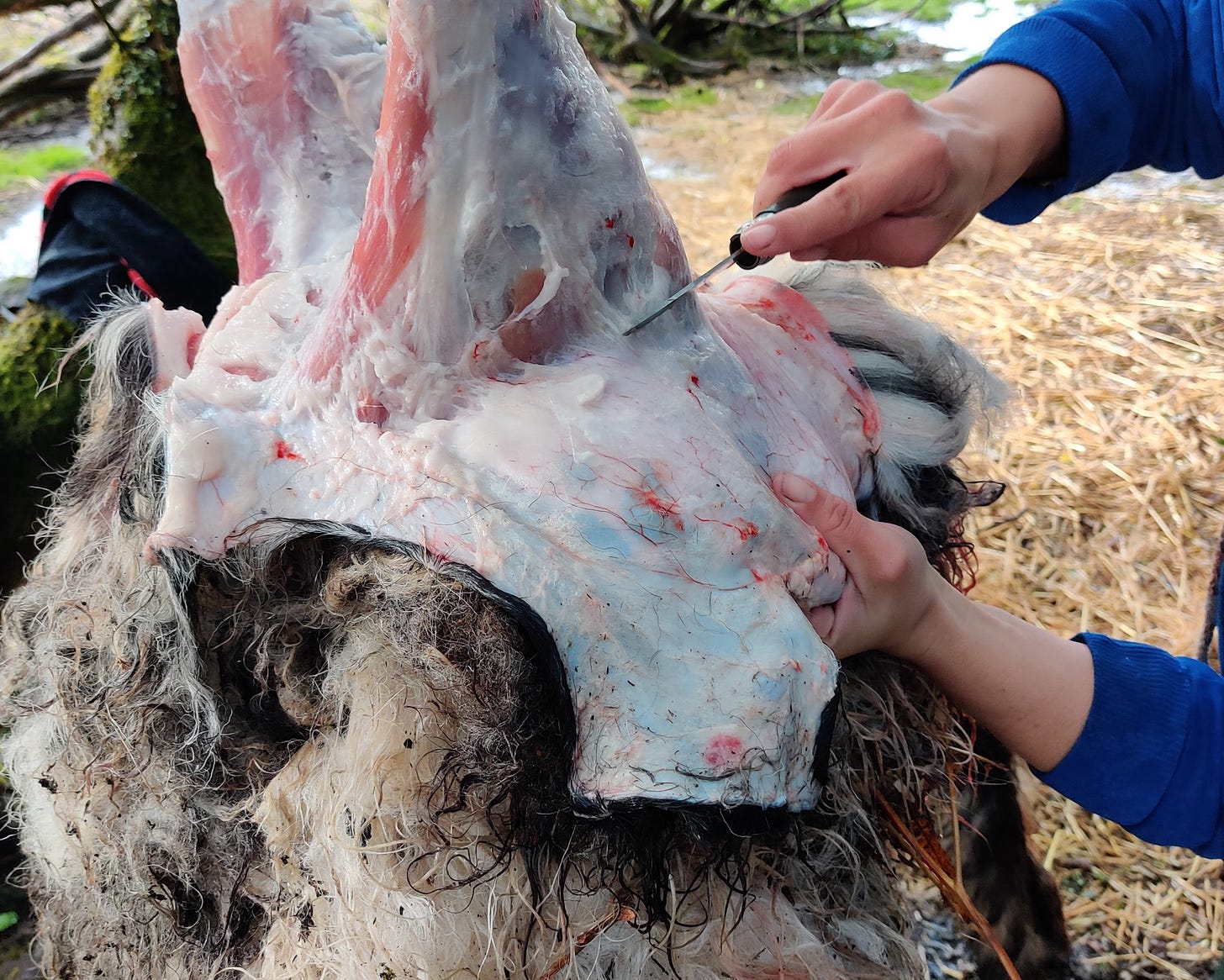
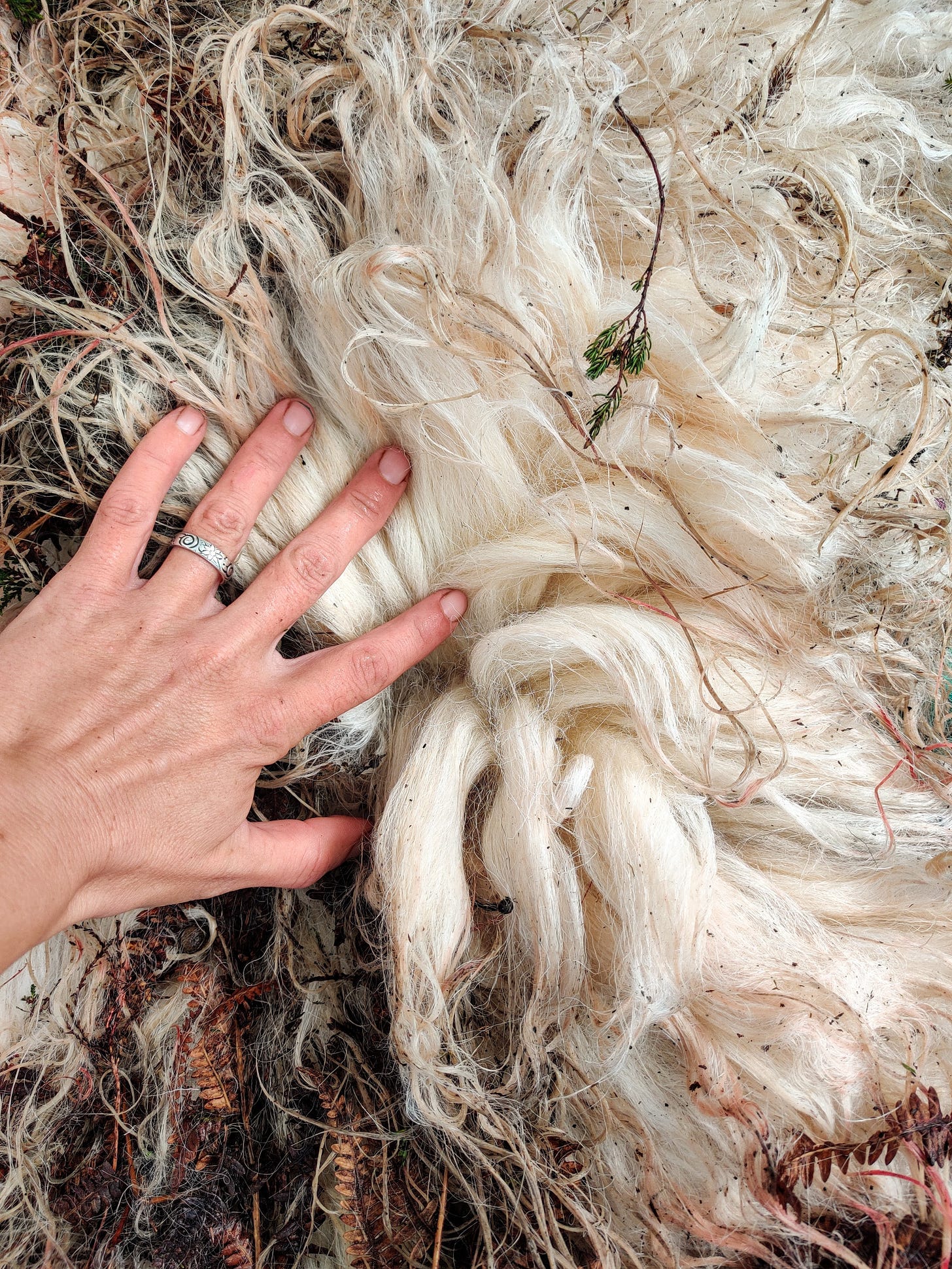
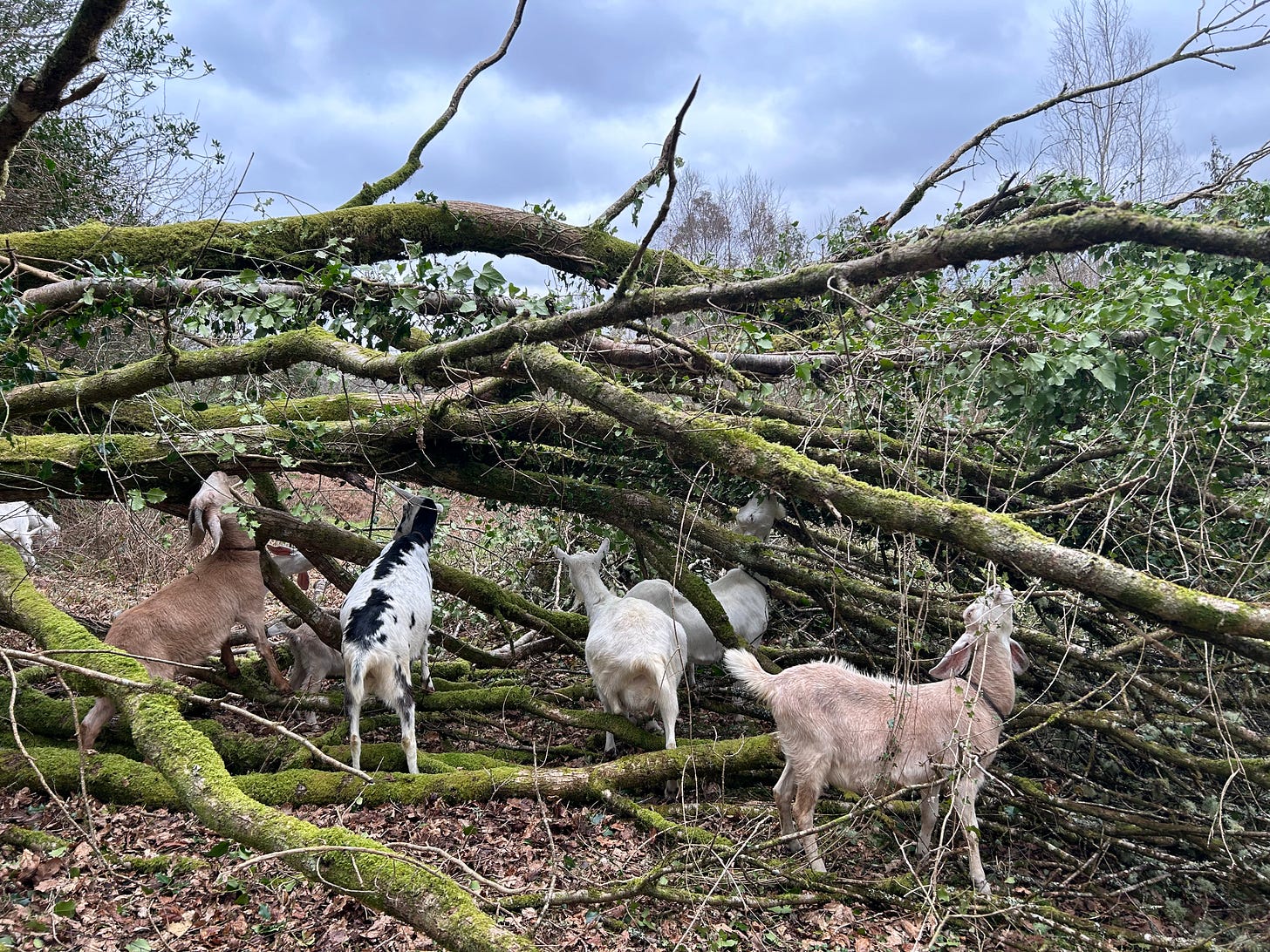
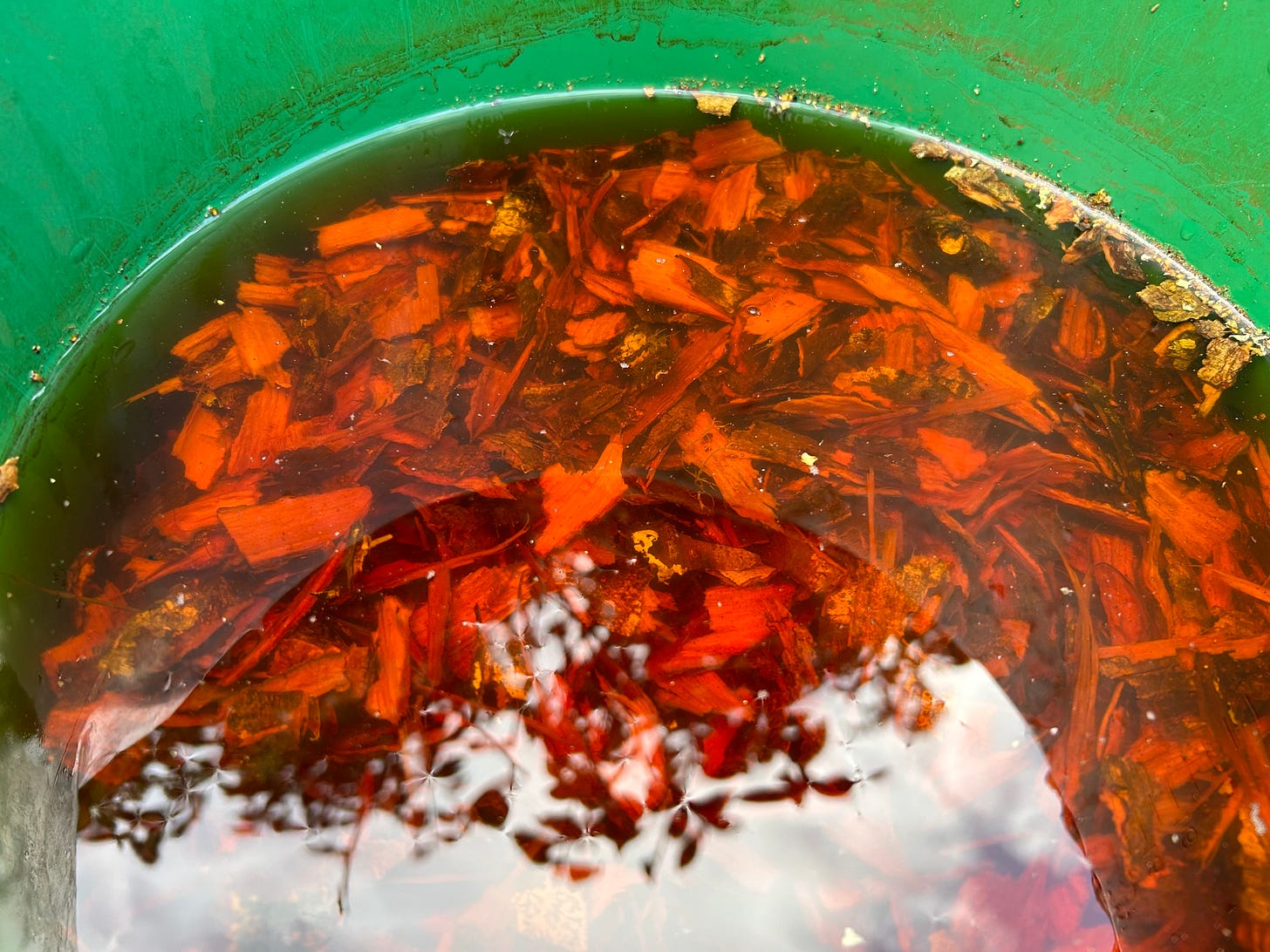
Hi Carly, thank you for your words and ways. I feel encouraged to try local tannins on hair on sheepskins. So far I ve been using mimosa extract on small batches of Shetland sheep from Assynt. Telling myself that it will be tricky to get a strength that tans the skins fast enough for the hair not to slip with local bark. Do you find that the hair stays in ok past a week in tan?
This is so exciting! 🌸
Wonderful to read this as I am working my lamb hides for the first time. I was afraid to try, but I am really enjoying the process.